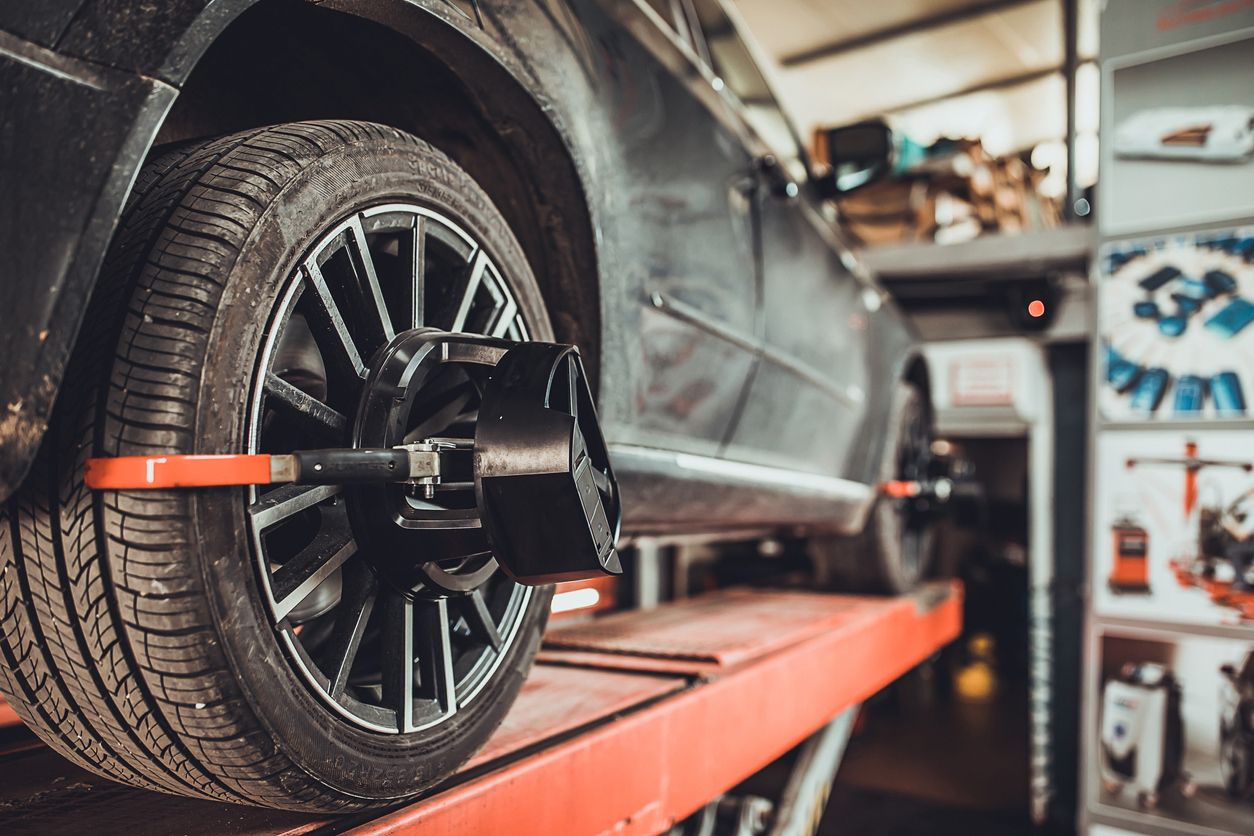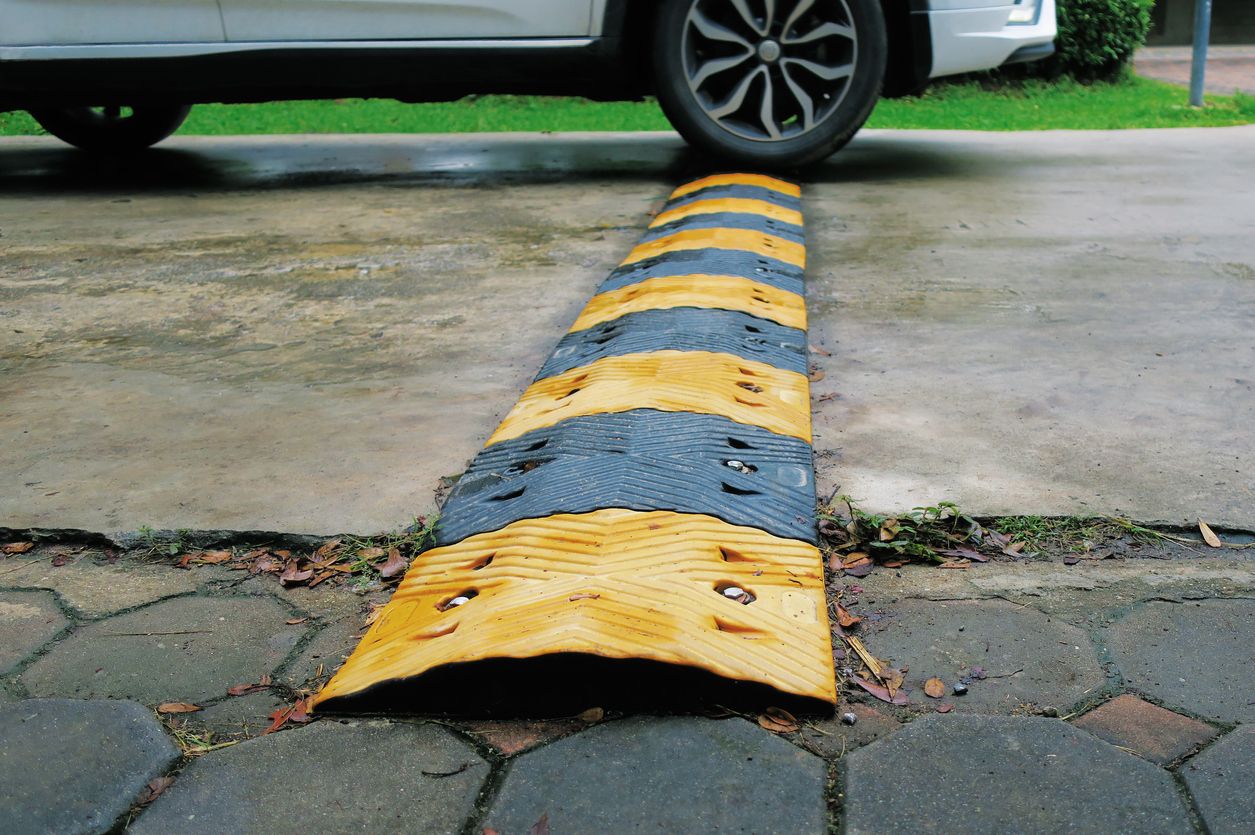Achieving proper tire alignment is crucial for your vehicle's performance. But, do you need a four-wheel alignment or a two-wheel alignment? Use this guide to learn the difference between the two alignment types and determine which is best for you.
What is a Wheel Alignment?
Unlike tire balancing, a wheel alignment — also known as a tire alignment — doesn't involve directly manipulating your car's wheels or tires at all. In fact, during a wheel alignment, automotive pros adjust your vehicle's steering and suspension system.
Your suspension connects your car to the wheels themselves, and the angles of your suspension impact how your tires make contact with the road.
An automotive professional adjusts your steering and suspension system to ensure your tires are at an optimal angle. To achieve the proper angles, alignments generally include toe, camber, and caster adjustments.
What is a Two-Wheel Alignment?
Wondering, "what is a front-end alignment?" Front-end — commonly known as two-wheel alignment — involves adjusting just your vehicle's front steering and suspension. A technician manipulates and angles your suspension components to meet manufacturer specifications during a two-wheel alignment. The technician may also adjust certain components within the steering system.
During this process, the front toe, camber, and caster are precisely angled until they're just so.
What is a Four-Wheel Alignment?
Unlike a two-wheel alignment, a four-wheel alignment will include both a front-end alignment and a rear suspension adjustment. This simply means that a professional technician will adjust any camber, toe, and caster angles on both the rear-end and front-end of your vehicle (if applicable).
What is a Rear-End Alignment?
Curious about rear-end alignments, too? We thought so. This alignment process is similar to a front-wheel alignment but in the rear of your vehicle. Camber, toe, and caster adjustments are made (if applicable) to ensure your rear tires strike the road just right.
Why Do I Need a Wheel Alignment?
Wheel alignments have many benefits, while improper wheel alignment can result in uneven or premature tire wear. Wheel alignments ensure that your tires can perform their best and wear evenly — which in turn extends the lifespan of your tires and helps keep hard-earned money in your pocket.
In addition to ensuring your tires are performing their best, a wheel alignment can resolve common problems, like pulling to one side, an off-center steering wheel, wander, or vibrating. Proper alignment can improve your vehicle's handling and your overall driving experience.
You likely need a tire alignment ASAP if you notice one or more of the following:
- Your tires have uneven tread wear
- Your car pulls or "drifts" to the left or right
- The steering wheel isn't centered even when driving straight
- The steering wheel vibrates when you accelerate
You'll want to get an alignment check after you've been in a collision or if you've been regularly driving on rough terrains — like pothole-riddled streets. Also, alignment will most likely be required after suspension modifications and upon replacing suspension or steering components with aftermarket parts.
Two-Wheel vs. Four-Wheel Alignment: Which Do I Need?
So, you're suspicious that your vehicle could use an alignment. But what kind of alignment? The type of alignment service your vehicle needs depends upon your steering and suspension system, manufacturer recommendations, and whether or not you've been in a collision or another incident that could impact your suspension system.
Do I Need a Four-Wheel Alignment?
Most modern vehicles — cars, small SUVs, crossovers, and vans — require a four-wheel alignment, as do all-wheel-drive equipped models. The general rule of thumb is that if you can align all four tires, you should.
Do I Need a Two-Wheel Alignment?
While most modern cars do require a four-wheel alignment, there are a few exceptions.
It's impossible to adjust the rear suspension of vehicles with a solid, fixed rear axle — often large trucks, SUVs, classic cars, or cars made by specific manufacturers. In these cases, your vehicle’s thrust angle will be checked and adjusted (if necessary) to ensure that all four wheels are pointing straight ahead.
Get a Tire Alignment Today at Firestone Complete Auto Care
Not sure which type of alignment is right for your ride? Stop by your nearest Firestone Complete Auto Care. Our expert technicians will carefully check and inspect all necessary components, including the camber, caster and toe angles, steering, suspension system, and more.
And, if your vehicle requires the recalibrations of features associated with Advanced Driver Assistance Systems (ADAS), a Safety Systems Alignment™ will be required to recalibrate cameras, sensors and radars. We'll also perform a test drive to ensure that all of your systems are working properly.
No matter which type of alignment your vehicle needs, we charge the same price. Schedule an appointment and get riding in the right direction today!



